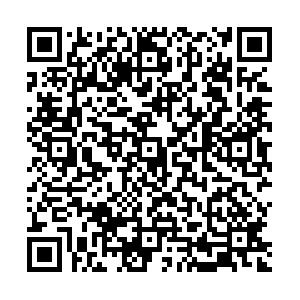| [1] |
Cucinotta F A, Kim M-H Y, Willingham V, et al.Physical and biological organ dosimetry analysis for international space station astronauts[J].Radiation Research, 2008, 170(1):127-138.
|
| [2] |
El-Jaby S, Tomi L, Sihver L, et al.Method for the prediction of the effective dose equivalent to the crew of the international space station[J].Advances in Space Research, 2014, 53(5):810-817.
|
| [3] |
ICRP.Recommendations of the ICRP, ICRP Publication 26[R].New York:Pergamon Press, 1977.
|
| [4] |
ICRP.1990 recommendations of the international commission on radiological protection, ICRP Publication 60[R].New York:Pergamon Press, 1991.
|
| [5] |
Cucinotta F A, Nikjoo H, Goodhead D T.Model for radial dependence of frequency distributions for energy imparted in nanometer volumes from hze particles[J].Radiation Research, 2000, 153(4):459-468.
|
| [6] |
ICRP.Assessment of radiation exposure of astronauts in space, ICRP Publication 123[R].Amsterdam:Elsevier, 2013.
|
| [7] |
曾志,李君利,邱睿,等.质子剂量微分谱预估空间辐射剂量[J].清华大学学报:自然科学版, 2006, 46(3):374-376. Zeng Z, Li J L, Qiu R, et al.Dose assessment for space radiation using a proton differential dose spectrum[J].Journal of Tsinghua University:Science and Technology, 2006, 46(3):374-376(in Chinese).
|
| [8] |
贾向红,许峰,黄增信,等.Monte Carlo方法在载人航天辐射安全性评价中的应用[J].清华大学学报:自然科学版, 2007, 47(S1):1045-1047. Jia X H, Xu F, Huang Z X, et al.Monte Carlo method in estimating radiation safety for manned spaceflight[J].Journal of Tsinghua University:Science and Technology, 2007, 47(S1):1045-1047(in Chinese).
|
| [9] |
曾志,李君利,贾向红,等.空间辐射剂量及屏蔽效应研究[J].清华大学学报:自然科学版, 2008, 48(3):391-394. Zeng Z, Li J L, Jia X H, et al.Radiation dose and shielding effects for space radiation[J].Journal of Tsinghua University:Science and Technology, 2008, 48(3):391-394(in Chinese).
|
| [10] |
Gustafsson K, Sihver L, Mancusi D, et al.Phits simulations of the matroshka experiment[J].Advances in Space Research, 2010, 46(10):1266-1272.
|
| [11] |
Sihver L, Sato T, Puchalska M, et al.Simulations of the matroshka experiment at the international space station using phits[J].Radiat Environ Biophys, 2010, 49(3):351-357.
|
| [12] |
Slaba T C, Qualls G D, Clowdsley M S, et al.Utilization of cam, caf, max, and fax for space radiation analyses using hzetrn[J].Advances in Space Research, 2010, 45(7):866-883.
|
| [13] |
Sato T, Endo A, Sihver L, et al.Dose estimation for astronauts using dose conversion coefficients calculated with the phits code and the icrp/icru adult reference computational phantoms[J].Radiation Environmental Biophysics, 2011, 50(1):115-123.
|
| [14] |
Puchalska M, Sihver L, Sato T, et al.Simulations of MATROSHKA experiment outside the ISS using PHITS[J].Advances in Space Research, 2012, 50(4):489-495.
|
| [15] |
Zhang B, Ma J, Liu L, et al.CNMAN:A Chinese adult male voxel phantom constructed from color photographs of a visible anatomical data set[J].Radiation Protection Dosimetry, 2007, 124(2):130-136.
|
| [16] |
Li J, Qiu R, Zhang Z, et al.Organ dose conversion coefficients for external photon irradiation using the chinese voxel phantom(cvp)[J].Radiation Protection Dosimetry, 2009, 135(1):33-42.
|
| [17] |
Liu L, Zeng Z, Li J, et al.Organ dose conversion coefficients on an icrp-based chinese adult male voxel model from idealized external photons exposures[J].Physics in Medicine and Biology, 2009, 54(21):6645-6673.
|
| [18] |
Liu L, Zeng Z, Li J, et al.An icrp-based chinese adult male voxel model and its absorbed dose for idealized photon exposures-the skeleton[J].Physics in Medicine and Biology, 2009, 54(21):6675-6690.
|
| [19] |
Agostinelli S, Allison J, Amako K, et al.Geant4-a simulation toolkit[J].Nuclear Instruments and Methods in Physics Research Section A:Accelerators, Spectrometers, Detectors and Associated Equipment, 2003, 506(3):250-303.
|
| [20] |
Briesmeister J F.MCNP-A general Monte Carlo N-Particle transport code, LA-12625-M[R].New Mexico:Los Alamos National Laboraroty Report, 1997.
|
| [21] |
Fasso A, Ferrari A, Ranft J, et al.Fluka:A multi-particle transport code, SLAC-R-773[R].Stanford:Stanford University, 2005.
|
| [22] |
Ziegler J F, Biersack J P.Littmark U.The stopping and range of ions in solids[M].New York:Pergamon Press, 1985:1-307.
|
| [23] |
Cucinotta F A, Kim M-H Y, Chappell L J.Space radiation cancer risk projections and uncertainties-2010, TP-2011-216155[R].Maryland:NASA, 2011.
|
| [24] |
Heynderickx D, Quaghebeur B, Wera J, et al.New radiation environment and effects models in esa's space environment information system(spenvis)[J].Space Weather, 2004, 2(10):S10S03.
|

 点击查看大图
点击查看大图







 下载:
下载:
